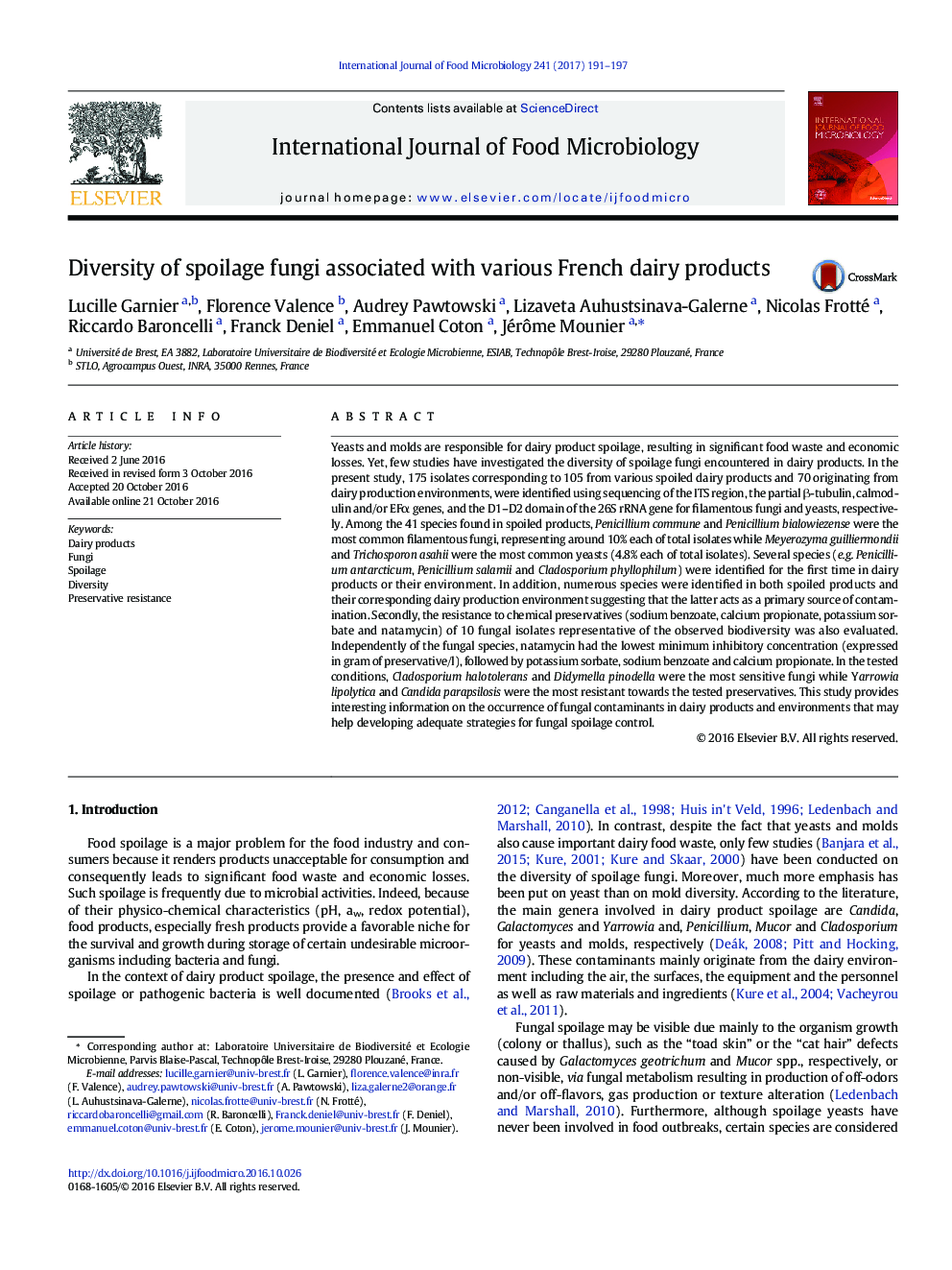| کد مقاله | کد نشریه | سال انتشار | مقاله انگلیسی | نسخه تمام متن |
|---|---|---|---|---|
| 6289670 | 1616542 | 2017 | 7 صفحه PDF | دانلود رایگان |
- Penicillium commune and Penicillium bialowiezense were the two major spoilage molds associated with the studied dairy products.
- Yeasts represented a significant part of spoilage fungi in the studied dairy products.
- Industrial environment is a primary source of fungal contamination.
- Yarrowia lipolytica showed high resistance to chemical preservatives.
Yeasts and molds are responsible for dairy product spoilage, resulting in significant food waste and economic losses. Yet, few studies have investigated the diversity of spoilage fungi encountered in dairy products. In the present study, 175 isolates corresponding to 105 from various spoiled dairy products and 70 originating from dairy production environments, were identified using sequencing of the ITS region, the partial β-tubulin, calmodulin and/or EFα genes, and the D1-D2 domain of the 26S rRNA gene for filamentous fungi and yeasts, respectively. Among the 41 species found in spoiled products, Penicillium commune and Penicillium bialowiezense were the most common filamentous fungi, representing around 10% each of total isolates while Meyerozyma guilliermondii and Trichosporon asahii were the most common yeasts (4.8% each of total isolates). Several species (e.g. Penicillium antarcticum, Penicillium salamii and Cladosporium phyllophilum) were identified for the first time in dairy products or their environment. In addition, numerous species were identified in both spoiled products and their corresponding dairy production environment suggesting that the latter acts as a primary source of contamination. Secondly, the resistance to chemical preservatives (sodium benzoate, calcium propionate, potassium sorbate and natamycin) of 10 fungal isolates representative of the observed biodiversity was also evaluated. Independently of the fungal species, natamycin had the lowest minimum inhibitory concentration (expressed in gram of preservative/l), followed by potassium sorbate, sodium benzoate and calcium propionate. In the tested conditions, Cladosporium halotolerans and Didymella pinodella were the most sensitive fungi while Yarrowia lipolytica and Candida parapsilosis were the most resistant towards the tested preservatives. This study provides interesting information on the occurrence of fungal contaminants in dairy products and environments that may help developing adequate strategies for fungal spoilage control.
Journal: International Journal of Food Microbiology - Volume 241, 16 January 2017, Pages 191-197
